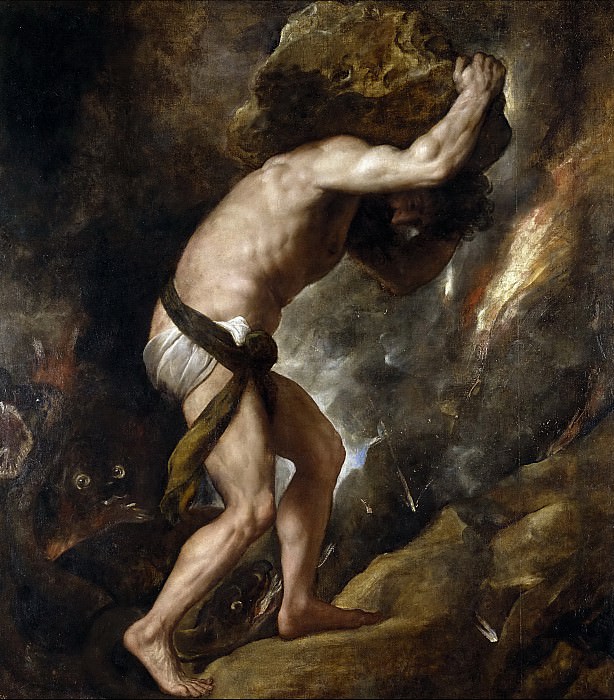Tiziano, Vecellio di Gregorio – Sísifo Part 1 Prado museum
Part 1 Prado museum – Tiziano, Vecellio di Gregorio -- Sísifo
Edit attribution
Download full size: 2595×2959 px (2,9 Mb)
Back to album: Part 1 Prado museum
Another of Titian’s grandiose paintings, Sisyphus, refers us to a rather famous ancient Greek myth that tells how the most cunning of men, capable of deceiving Death herself, Sisyphus revealed to another god the secret of Zeus without the latter’s permission, for which he had to be killed by Thanatos (Death himself), whom Zeus had sent. The young man tricked Thanatos and put him in irresistible chains, thus saving people from death (they simply stopped dying). Outraged by such impudence, the gods were perplexed on Olympus, so Ares descended to Earth, freed Thanatos and threw the boy into Hades.
Description of Titian’s painting Sisyphus
Another of Titian’s grandiose paintings, Sisyphus, refers us to a rather famous ancient Greek myth that tells how the most cunning of men, capable of deceiving Death herself, Sisyphus revealed to another god the secret of Zeus without the latter’s permission, for which he had to be killed by Thanatos (Death himself), whom Zeus had sent. The young man tricked Thanatos and put him in irresistible chains, thus saving people from death (they simply stopped dying).
Outraged by such impudence, the gods were perplexed on Olympus, so Ares descended to Earth, freed Thanatos and threw the boy into Hades. The young man did not lose heart: he ordered his wife not to offer sacrifices to the gods in memory of him. Once again the gods did not understand what was going on. Hades’ wife sent Sisyphus back to earth to tell his wife that it was time to come to her senses and make sacrifices.
When the young man arrived in his possession, he remained there with no intention of returning to the kingdom of the dead. And he lived happily ever after for some time until the gods finally got tired of it; death came quite suddenly and swept Sisyphus back underground.
Only this time, no one took pity on him, he was punished: from now on he was obliged to drag the heaviest block of marble up the highest mountain without sleep or rest. When he got to the peak and tried to set it down, the block fell off and rolled back down. And the poor man had to start all over again... Hence the expression "Sisyphus work," which means fruitless, agonizing work.
It is this work that Titian portrayed on his magnificent canvas. Moreover, the colors (and Titian was a master of playing with light and color) create the fullest sense of the union of man and stone in a single monolith, which represents the endless and futile hard work...
Кому понравилось
Пожалуйста, подождите
На эту операцию может потребоваться несколько секунд.
Информация появится в новом окне,
если открытие новых окон не запрещено в настройках вашего браузера.
You need to login
Для работы с коллекциями – пожалуйста, войдите в аккаунт (open in new window).




















You cannot comment Why?